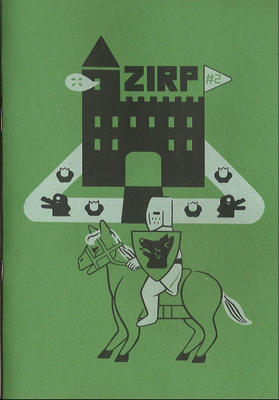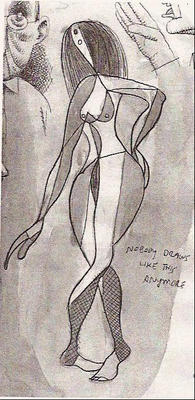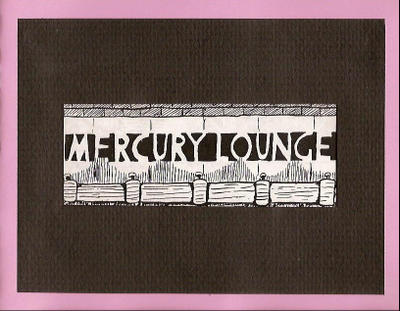
Shawn Cheng, the artist that brought us the irresistible and devilish Bogies mini-comic a year ago, has two new minis including the revenge romp Vengeance at Cackling Mountain. Vengeance is a 48 page fight scene shrouded in darkness, as the only illumination on these pages comes from the glow of a lamp or the occasional burst of flame. The pages are black, but Cheng uses three silkscreened colors throughout, giving each page a unique handcrafted look. I’ve prattled on about the handcrafted aspect of mini-comics many times, I know. But, it bears repeating. Often these books are as much art as comics. You can see the artist’s hand in the finished product. The line art in Vengeance was xeroxed, but each page has also been silkscreened. In other words, a lot of work went into these 48 pages. You can almost picture a flurry of pages hanging around in a basement or spare room as they dry. This book also has a binding with hand-stitched blue yarn.
Vengeance is a silent tale, but there is a story in these wordless pages. A lanky, naked fellow is walking around in the forest when he’s waylaid by this very sinister looking beast. This beast has been drinking and he’s carrying a detached human arm. The arm is what he uses to hit the naked guy, and it becomes stuck in the poor guy’s face. This panel is an explosion of yellow, white and burnt orange as the pain radiates from the poor guy’s face. Just pages later though, he casually touches the beast’s back and a flame appears.

Using the black paper for this mini is a bold experiment, and for the most part it works. There are a few panels with just black lines on black paper with highlights of the whites of the beast’s eye. You can still tell what’s happening in this short scene, but the glorious sense of movement in these panels is muted by the darkness. The darkness is necessary for the story though, because it’s running away from the source of light. The other pages are solid, especially the ones where Cheng captures the swift movement of the two characters. Probably the best pages in the entire book are the ones that make up roughly the last quarter. Here Cheng adds a blue to his palette that perfectly mimics the night sky over a lake.

Vengeance at Cackling Mountain is $7 for 48 pages. The price may seem a little steep to some, but it won’t when you hold this mini in your hands. Check out Vengeance and other Partyka titles at the Partyka online catalogue































